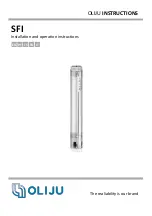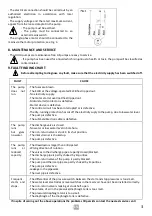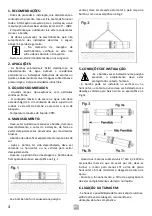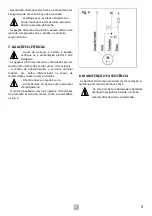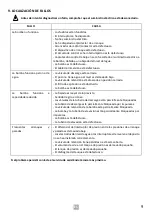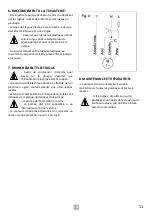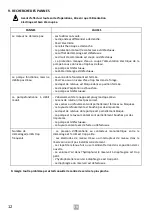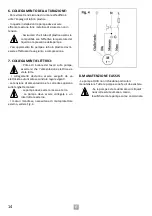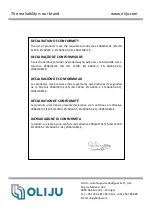
3
EN
- The electrical connection should be carried out by an
authorized electrician in accordance with local
regulation.
- The supply voltage and the rated maximum current,
appear from the loose data plat in the pump.
- The pump must be earthed.
- The pump must be connected to an
external mains switch.
- The single-phase motor should be connected to the
mains via the motor protection, see Fig. 4.
8. MAINTENANCE AND SERVICE
- The OLIJU pumps are maintenancefree. All pumps are easy to service.
- If a pump has been used for a liquid which is injurious to health or toxic, the pump will be classified as
contaminated.
9.FAULT FINDING CHART
Before attempting to diagnose any fault, make sure that the electricity supply has been switched off.
FAULT
CAUSE
The pump
does
not
run.
- The fuses are blown.
- The ELCB or the voltage-operated ELCB has tripped out.
- No electricity supply.
- The motor starter overload has tripped out.
- Motor starter/contactor is defective.
- Starter device is defective.
- The control circuit has been interrupted or is defective.
- The dry-running protection has cut off the electricity suply to the pump, due to low water level.
- The pump is defective.
- The submersible drop cable is defective.
The pump
runs
but gives
no water.
- The discharge valve is closed.
- No water or low water level in borehole.
- The non-return valve is stuck in its shut position.
- The inlet strainer is choked up.
- The pump is defective.
The pump
runs
at
reduced
capacity.
- The drawdown is larger than anticipated.
- Wrong direction of rotation.
- The valves in the discharge pipe are partly closed/blocked.
- The discharge pipe is partly choked by impurities.
- The non-return valve of the pump is partly blocked.
- The pump and the riser pipe are partly choked by impurities.
- The pump is defective.
- Leakage in the pipework.
- The riser pipe is defective.
Frequent
starts and
stops.
- The differential of the pressure switch between the start and stop pressures is too small.
- The water level electrodes or level switches in the reservoir have not been installed correctly.
- The non-return valve is leaking or stuck half-open.
- The volume of air in the pressure/diaphragm tank is too small.
- The pressure/diaphragm tank is too small.
- The diaphragm of the diaphragm tank is defective.
If in spite of carring out the above operations the problem still persists contact the nearest service centr

